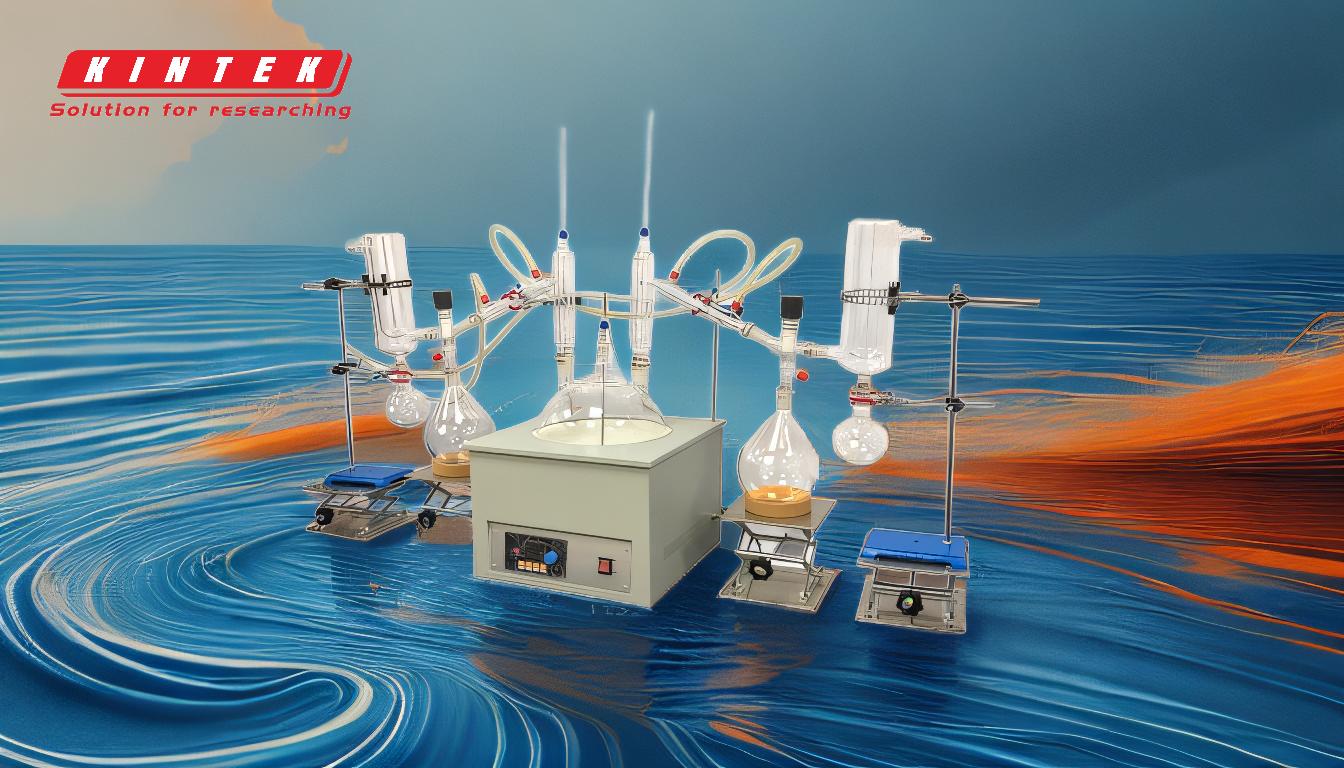Short path distillation operates within a specific temperature range to ensure efficient separation of compounds without causing degradation. The maximum recommended temperature is 220°C, as exceeding this limit can lead to compound breakdown and safety risks. The heating mantle typically operates between 100°C and 250°C, while the condenser is maintained at around 50°C for proper recondensation. The heating media in the evaporator can range from 149°C to 343°C, but the actual material temperature is carefully controlled to stay within safe limits. Precautions are necessary to avoid burns, as the equipment reaches high temperatures during operation.
Key Points Explained:

-
Maximum Recommended Temperature (220°C):
- The upper limit for short path distillation is 220°C. Exceeding this temperature can degrade sensitive compounds and create safety hazards, such as overheating or equipment failure.
- This temperature is critical for preserving the integrity of the materials being distilled, especially for heat-sensitive compounds like essential oils or pharmaceutical intermediates.
-
Heating Mantle Temperature Range (100°C to 250°C):
- The heating mantle is responsible for heating the material in the boiling flask. It typically operates between 100°C and 250°C, depending on the boiling points of the compounds being separated.
- This range ensures that the material reaches the necessary temperature for vaporization while avoiding excessive heat that could damage the compounds.
-
Condenser Temperature (Around 50°C):
- The condenser is cooled to approximately 50°C using a chiller. This temperature is essential for recondensing the vapors back into liquid form efficiently.
- Maintaining a lower temperature in the condenser ensures that the vapors do not escape and are effectively collected as distillate.
-
Heating Media Temperature Range (149°C to 343°C):
- The heating media in the evaporator can reach temperatures between 149°C and 343°C (300°F to 650°F). However, this does not mean the material itself reaches these temperatures.
- The heating media provides the necessary thermal energy to the system, but the actual material temperature is controlled to stay within safe limits.
-
Precautions for High Temperatures:
- The equipment, including the heating mantle and evaporator, can reach extremely high temperatures during operation. Direct contact with the equipment can cause severe burns.
- Proper handling and safety measures, such as using insulated gloves and avoiding direct contact, are essential to prevent accidents.
-
Monitoring and Adjusting the Process:
- If the distillation process slows down, it may indicate the end of a fraction or a need to adjust the temperature. Monitoring the process and making timely adjustments ensures optimal separation and prevents overheating.
- This step is crucial for achieving high-purity distillates and maintaining the efficiency of the distillation process.
By understanding these key points, equipment and consumable purchasers can make informed decisions about the specifications and safety features required for short path distillation systems. Proper temperature control and adherence to safety protocols are essential for successful and safe operation.
Summary Table:
| Component | Temperature Range | Purpose |
|---|---|---|
| Maximum Recommended | 220°C | Prevents compound degradation and safety hazards. |
| Heating Mantle | 100°C to 250°C | Heats material for vaporization without excessive heat. |
| Condenser | ~50°C | Recondenses vapors efficiently for collection. |
| Heating Media (Evaporator) | 149°C to 343°C | Provides thermal energy while keeping material temperature safe. |
| Precautions | High temperatures | Avoid burns by using insulated gloves and proper handling. |
| Monitoring | Adjust as needed | Ensures optimal separation and prevents overheating. |
Need help selecting the right short path distillation system? Contact our experts today for personalized guidance!











